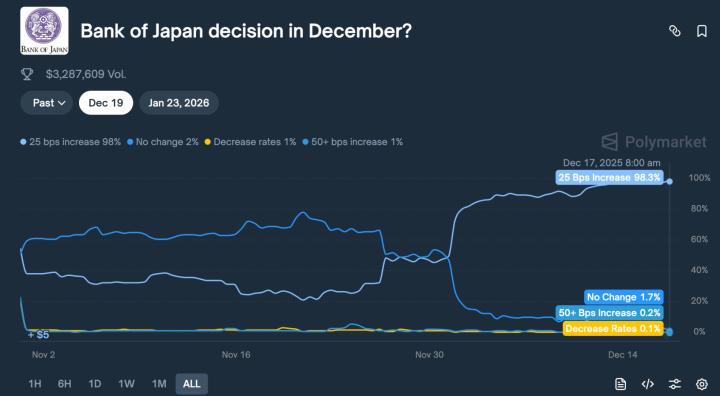Author: Michael Nadeau, The DeFi Report; Translated by Bai Shui, Jinse Finance
Many of you are hoping to see more data/analysis on the current cycle status.
So that's what we're focusing on this week.
Will there be another bull market for cryptocurrencies by 2025? Despite many positive developments, why am I still so bearish? How can we find flaws in my analysis?
Our goal is to answer these questions and more.
The Bear Case
Before we discuss on-chain data, I want to share more about our qualitative analysis on how we view the crypto cycles.
Early Bull
This is roughly the period from January 23 to October 23.
This is the period after the market bottomed out post-FTX. Things got very quiet (low trading volume, crypto Twitter dormant). Then we started to rally again.
During this period, BTC went from around $16.5k to $33k.
However, no one is calling this a bull market. During the "Early Bull" period, most of the market is still in a wait-and-see mode.
Wealth Creation
This is roughly the period from November 2023 to March 2024.
This is when we see some big moves and some significant wealth creation. SOL went from $20 to $200. The Jito airdrop (December 23) created an additional wealth effect in Solana and repriced the Solana DeFi (Pyth, Marinade, Raydium, Orca, etc.). The venture capital market reached a frenzy peak during this period (which is very typical).
BTC went from $33k to $72k. ETH went from $1.5k to $3.6k.
Bonk's market cap went from $90 million to $2.4 billion (26x). WIF's market cap went from $60 million to $4.5 billion (75x). The seeds of a larger "Meme Season" have been planted.
But it's still relatively "quiet" during this period. Your "average friend" may not have even asked you about crypto yet.
Wealth Distribution
This is roughly the period from March 2024 to January 2025.
The "Attention Peak" period. We tend to see "WAGMI" type sentiment, rapid rotation, new (short-lived) narratives, and blind speculation rewarded. Celebrities and other "crypto influencers" often enter during this period. Crazy headline news like "Tesla buys BTC" or "Bitcoin Treasury Reserve" often emerge in the wealth distribution phase.
Why?
New investors are drawn into the market by these headline news. They don't realize they're late.
This is the second wave of the "Meme Season", which then evolves into the "AI Agent Season". During this period, the market ignores a lot of obvious problematic behavior. No one wants to call it out loudly. People are making money.
Now. This brings us to where we are today.
Wealth Destruction
We believe we entered this period shortly after Trump took office.
This is the period that follows the blow-off top. The bullish catalysts are now in the past. Seemingly positive news is met with bearish price action.
In the current state, executive actions around "Bitcoin Treasury Reserves" are not driving market progress - an important signal. During this period, reversals often encounter key resistance levels and gradually fade (we saw this after Trump's tweet about crypto reserves last week).
Some other signals we look for in the wealth destruction phase:
Liquidations and "panic" are disrupting the market, but it hasn't fully sobered the market yet. We saw this in the DeepSeek AI panic and tariff uncertainty.
Investors are "hopeful". We see a lot of discussion today about the dollar declining and global M2 rising (more on that later in the report).
The "grifter" types are entering the market. More and more people are DMing us asking us to "check out their project". More advertising capital is circulating. Well-funded projects are being carelessly spent at conferences. More PvP/competition/infighting. The industry generally exudes a worse vibe. In the "wealth destruction" phase, the bad actors start to get called out.
During this period, the losing investors also start to surface - usually after the liquidations. The last cycle started with Terra Luna. That led to the collapse of Three Arrows Capital. That led to the bankruptcies of BlockFi, Celsius, FTX, etc. This ultimately led to the demise of Genesis and the sale of CoinDesk.
We haven't seen any blow-up events yet. We'll note that this cycle should be fewer - simply because there are fewer CeFi companies. Time will tell. Fewer blow-ups may lead us to establish higher lows when we officially bottom.
Where might these blow-ups come from?
No one knows, but I'd guess look at the usual suspects.
Exchanges. Keep a close eye on some of the "B and C-tier" international exchanges for hidden leverage and/or potential fraud.
Stablecoins. We're watching Ethena/USDe - the stablecoin currently in circulation is close to $5.5 billion. It maintains its peg and earns yield from cash and arbitrage trades (holding spot assets, shorting futures) - a major source of leverage last cycle (via Greyscale). Ethena's increased reliance on centralized exchanges adds additional counterparty risk. Additionally, MakerDAO has invested a portion of its reserves into USDe, bringing additional cascade risk to DeFi.
Protocols. Watch for an increase in hacks, and potential liquidation cascades due to crypto collateral on platforms like Aave - which still has over $11 billion in active loans (down from $15 billion peak).
MicroStrategy. We think they've done a good job managing their debt prudently, as most of it is long-term unsecured debt or convertible debt (no margin calls on their BTC holdings). Additionally, they were able to withstand a 75% drop in BTC prices in the last cycle. That said, a significant drop in BTC prices could put pressure on Saylor, forcing him to sell large amounts of BTC at the worst time.
The best time to re-enter the market is at the end of the wealth destruction phase. We don't believe we're there yet. Of course, we'll let you know when we think we're back in the "buy zone".
Bearish Data
DEX Trading Volume
Solana DEX trading volume is down 80% from its peak after Trump's memecoin launch. Meanwhile, the number of unique traders has declined by over 50%.
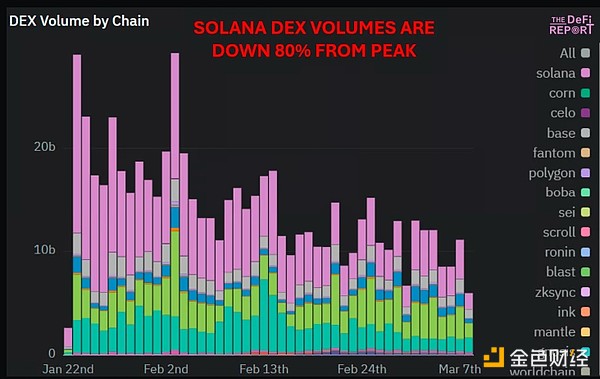
Token Issuance
Token issuance on Solana is down 72% from its peak. However, the chain is still creating over 20,000 tokens per day.
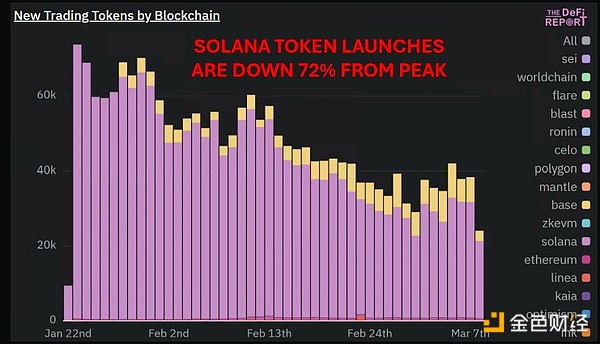
Bitcoin Long-Term Holder MVRV Ratio
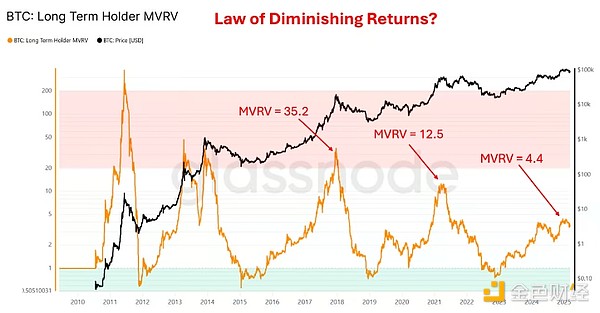
The MVRV (the "smart money" of Bitcoin) of long-term holders peaked in December last year at 4.4. This is 35% of the 21 cycle peak of 12.5, and also 35% of the 2017 cycle peak.
Bitcoin rallied about 80x from bottom to peak in the 2017 cycle. It rallied about 20x in the 2021 cycle. In the current cycle, it has rallied about 6.6x.
Bitcoin's realized price (the average cost basis of all circulating Bitcoin) reached a peak of $5,403 in the 2017 cycle, 15.1x higher than the 2013 cycle peak. It reached $24,530 in the 2021 cycle, 4.5x higher than the 2017 cycle peak. Today, the realized price is $43,240, 1.7x the 2021 cycle peak.
Here is the English translation of the text, with the terms in <> retained as is:Key Points:
From the data points above, we can observe the symmetry in the periodic decline of the peaks. We believe these data clearly tell us that the law of diminishing returns is quite real.
Bitcoin is now a $1.7 trillion asset. No matter how optimistic the headlines, investors should not expect to see the kind of sustainable parabolic trajectory we've seen in the past. Moving assets now require too much capital.
When BTC loses momentum, the rest of the market will lose everything.
is weakening. We've been watching this closely as we're concerned that the "comeback story" of is built on what appears to be a "house of cards" - given that over 61% of DEX trading volume this year has been in . Additionally, less than 1% of users have accounted for over 95% of the fees in the past 30 days. This is concerning as it highlights that a small subset of users ("whales") are preying on everyone else (the "small fish" trading ). So if the "small fish" get tired of losing and take a break (which we think they will), we may see 's fundamentals deteriorate rapidly.
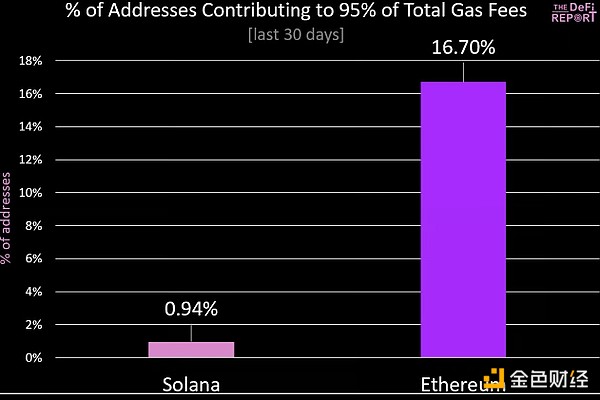
Data: Report, Dune (Base Fee + Priority Fee + Jito Tip to Solana)
long-term holders have now profited twice in the past year. Their realized price (representative of their cost basis) is currently around $25,000. Meanwhile, the short-term holders who bought at the peak are now in the red (average cost basis of $92,000). We believe that as price reaches a peak of $109,000, this group may continue to sell at lower prices.
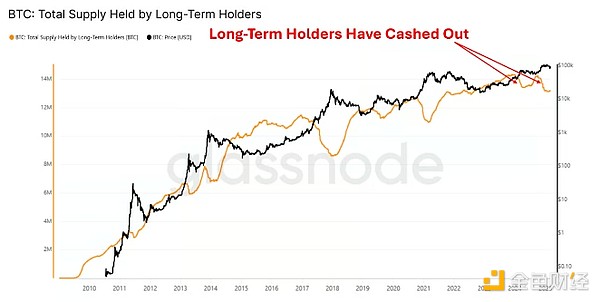
When you put it all together, we believe it is undeniable that the "typical" cycle has ended. To deny this is to deny reality.
Of course, there is no "law" at work here.
We believe the best way to handle this information is to accept the reality + assign a probability that the cycle has peaked. We believe this probability is clearly above 50%.
After doing the groundwork, we try to find the holes in the paper and stress-test our views.
Let's do that.
The Bull Case
I still see considerable resistance to the bear market. The bull market won't just lay down its arms quietly.
This raises the question: Does the bull market provide more evidence that we have entered the "wealth destruction, i.e. negation" phase? Or might we become overly pessimistic at local bottoms before rallying again?
In this section, we'll go through some of the key "bull case" arguments I see.
Global M2/Liquidity

The green box on the right shows that as global M2 starts to rise, is declining. Some have pointed this out and cited the correlation with and how 's response is typically lagged (2-3 months).
That said, the green box on the left shows the same dynamics at the end of the last cycle: M2 rising as declined. In fact, global M2 didn't peak until early April 2022 - 5 months after peaked.
Since mid-January, global M2 has risen 1.87% as central banks have largely shifted from tightening to easing.
This is favorable for liquidity conditions.
But we should also ask the following:
What is driving the growth in M2? We believe this is mainly due to USD depreciation (down 4% since Feb 28!) - which in USD terms means more foreign currency. This is a tailwind for global M2. Additionally, the reverse repo facility has recently been depleted, and China is easing policy to boost the economy.
Will this continue? We believe the USD will continue to decline as investors shift funds overseas, but not at the pace we've seen in the past few weeks. We think China will continue to allow the USD to depreciate. However, we believe the Fed won't ease policy in the near term as they've stated reserves remain "ample". We believe they are still concerned about inflation.
How does this compare to the liquidity conditions we saw last year? We believe the current liquidity conditions should be viewed as a headwind compared to last year. Remember, it's about the rate of change, not just the nominal growth. We strongly feel that the Fed and Treasury "stimulated" the market last year to help Biden/Harris get re-elected. This was done through "shadow liquidity" - or as Cross Border Capital's Michael Howell puts it, "non-QE, QE" and "non-yield curve control, yield curve control". The chart below shows us the impact on the rate of change after the Trump administration removed these policies.
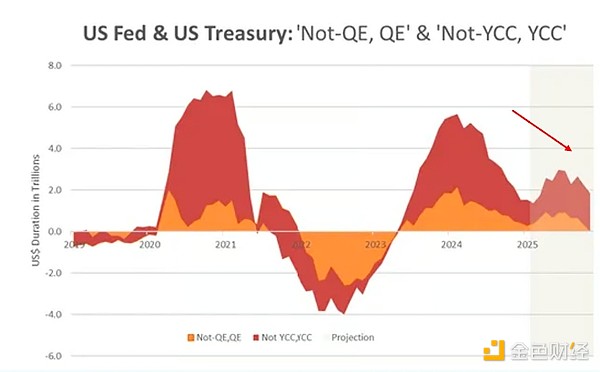
Estimates suggest the above "secret stimulus" injected $5.7 trillion into the US market in early '24. This was achieved by depleting reverse repos + pre-loading new bond issuance.
Finally, we believe investors should closely watch the comments made by Secretary Yellen in her CNBC interview last week:
"The markets and the economy have become addicted. We've become addicted to government spending. There will be a detox period. There will be a detox period".
Business Cycle/ISM
We previously pointed out that ISM data suggested the start of a new business cycle. We also recorded strong data on capital expenditure purchases and small business confidence. We believe this is real, but the slowdown is also evident. The data we saw last month may have been distorted by some manufacturers "pulling forward" purchases in anticipation of tariffs. Since then, we've seen weakening in services and new orders data. The February manufacturing PMI reading was 50.3, down from 50.9 in January.
Strategic Bitcoin Reserves
Up until last Friday, we were still seeing crypto-native players talk hopefully about strategic crypto/Bitcoin reserves - though the market has shrugged off this news multiple times over the past 6 weeks.
I suppose we all agree this is a "buy the rumor, sell the news" event.
Is the "Cycle" Thinking Flawed?
We should also acknowledge that this "cycle" is different from past cycles.
For example:
hit an all-time high for the first time before the halving.
This cycle is much shorter, with only a two-year bull market.
The performance of has been markedly different, as 's dominance has been steadily rising since early '23.
Bitcoin is now fully integrated into the financial system, with the support of the US government.
If the "cycle thinking" is flawed, then perhaps we haven't reached the peak yet. Instead, we might be in a pause/correction/consolidation phase before the next leg up, rather than a year-long bear market with 75-80% price declines (as we've seen in the past)?
Our view is that yes, the cycle is evolving. That said, we still expect the bear market to last 9-12 months.
Conclusion
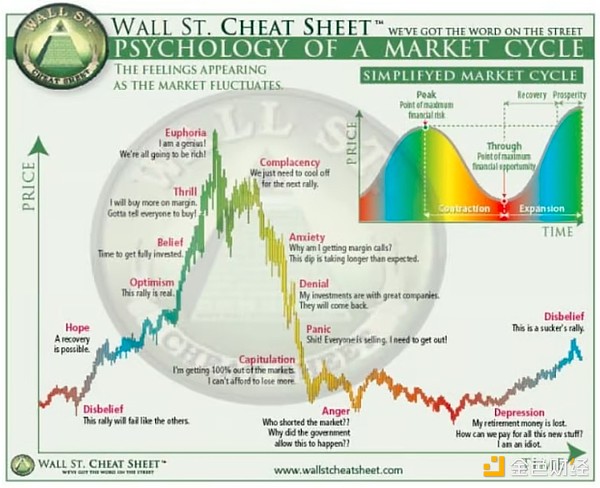
In summary, our views are:
We believe we are currently in the "complacency" phase of the cycle shown in the chart above.
All the bullish catalysts that people could identify a few years ago have now played out.
The economy may be heading towards a recession. We believe the message conveyed by the Trump administration is very clear. They are actually telling us that the economy needs to be detoxified. We should believe their words. This is very similar to Powell's statement in early 2022 that "pain is coming". Our current view is that Altcoins are the canary in the coal mine. The traditional financial markets will bleed/decline slowly as a result.
Given this extremely pessimistic sentiment, we can see the market rebounding to the $90,000 low of BTC in the short term. However, we believe this will be met with a massive sell-off - this could stifle any hope of a recovery in the bull market structure.
As always, we remain open-minded about being wrong. Our analysis is based on the information we have today. As new information emerges, we will update our views.
What do we need to see to turn bullish again?
We will be focusing on the following factors:
Reversal of fiscal tightening/DOGE efforts.
Significant reduction in Fed/quantitative easing.
Massive influx of global liquidity driven by the Fed (not just China).
Significant pullback/capitulation in the S&P 500/Nasdaq index.
Our concern is that the bearish narrative is starting to become the consensus. This makes us a bit hesitant. But for now, we still need to consider other factors - as the cycle top is approaching, the bear market is coming.
Of course, in the long run, there are many things to be optimistic about.
Cryptocurrencies have indeed entered a "turning point" period. It's time to rebuild the financial system on public blockchains.
Not to mention, we like bear markets. As the tide goes out, we can more easily distinguish the noise from the signal of past cycles - this will prepare us for the next bull market.




